#sdlc
Explore tagged Tumblr posts
Text
12 DevSecOps Tools That Make Security Part of Your Code

Security doesn’t have to slow you down. These 12 free and open source tools help developers bake security into every stage of the software development lifecycle—without killing speed or creativity.
TechTarget explains how modern DevSecOps relies on smart, developer-friendly tools that work from the first commit to production. Tools like IriusRisk, Semgrep, Snyk, ZAP, StackHawk and others offer threat modelling, secret scanning, API testing and real-time protection—all designed to integrate into existing workflows. Each tool is chosen for its power, flexibility and accessibility, ensuring security fits naturally into development rather than being forced on it.
Sources: TechTarget
3 notes
·
View notes
Text
SDLC? Oh, it's the game plan behind every good software.
SDLC stands for Software Development Life Cycle, and it's basically the blueprint developers follow when building software. It breaks the whole thing down into clear steps so nobody’s lost in the sauce.
Here’s the usual flow: 👂 Requirement Gathering – What do users actually want? 🧠 Design – Map out how things should look and work. 💻 Development – Write the code, make the magic happen. 🧪 Testing – Find and squash the bugs. 🚀 Deployment – Send it out into the world. 🛠 Maintenance – Fix issues and keep it fresh.
It’s like building a house, but for software. No one skips to the roof first — you need that foundation.
Different projects might use different SDLC models (like Agile if you like working in sprints, or Waterfall if you’re all about that step-by-step life).
Wanna go deeper? Here’s a great breakdown: 👉 SDLC on PrepInsta
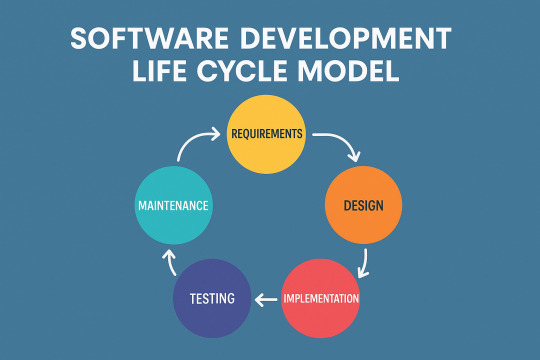
2 notes
·
View notes
Text

@ouromexinfotech stands out as a premier IT solutions provider in India, 𝘀𝗽𝗲𝗰𝗶𝗮𝗹𝗶𝘇𝗶𝗻𝗴 𝗶𝗻 𝘄𝗲𝗯 𝗮𝗻𝗱 𝘀𝗼𝗳𝘁𝘄𝗮𝗿𝗲 𝗱𝗲𝘃𝗲𝗹𝗼𝗽𝗺𝗲𝗻𝘁 𝘂𝘀𝗶𝗻𝗴 𝘁𝗵𝗲 𝗦𝗗𝗟𝗖 𝗺𝗼𝗱𝗲𝗹.
🌟💻 Their expertise spans from custom website creation to affordable 𝗦𝗘𝗢 𝘀𝗲𝗿𝘃𝗶𝗰𝗲𝘀 𝗮𝗻𝗱 𝟮𝟰/𝟳 𝘀𝘂𝗽𝗽𝗼𝗿𝘁.
With a commitment to quality and client satisfaction, https://omexinfotech.com/ ensures top-notch service. 🚀🔧
#omexinfotech#webdevelopment#softwaredevelopment#itsolutions#SDLC#customwebsites#AffordableSEO#24x7Support#TechExperts#qualityservice#ecommercedevelopment#WebsiteMaintenance#DigitalSolutions#TechInnovation#IndiaIT
1 note
·
View note
Photo
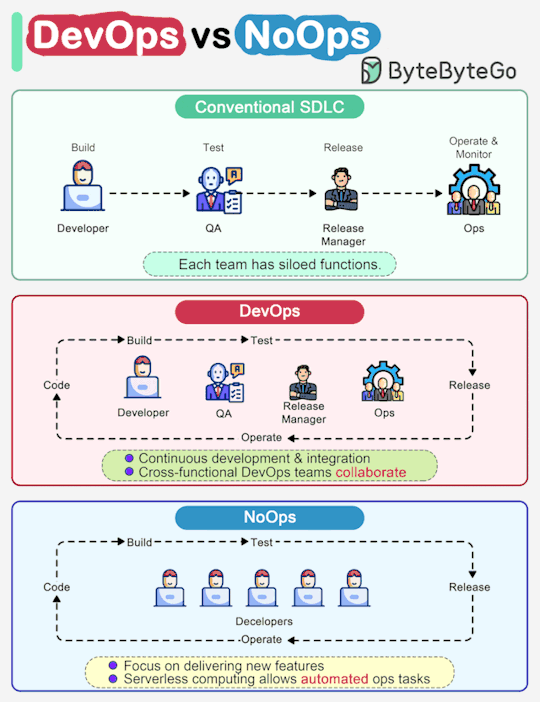
ByteByteGo nails another "a picture is worth a thousand words" infographic. This one highlights some key differences between traditional SDLC, DevOps and emerging NoOps.
In a traditional software development, code, build, test, release and monitoring are siloed functions. Each stage works independently and hands over to the next stage.
DevOps, on the other hand, encourages continuous development and collaboration between developers and operations. This shortens the overall life cycle and provides continuous software delivery.
NoOps is a newer concept with the development of serverless computing. Since we can architect the system using FaaS (Function-as-a-Service) and BaaS (Backend-as-a-Service), the cloud service providers can take care of most operations tasks. The developers can focus on feature development and automate operations tasks.
NoOps is a pragmatic and effective methodology for startups or smaller-scale applications, which moves shortens the SDLC even more than DevOps.
(via EP90: How do SQL Joins Work? - ByteByteGo Newsletter)
5 notes
·
View notes
Text
Why Every Developer Needs to Care About Software Testing
We just published a new blog post that takes a deep dive into the world of quality assurance and testing in software development.
✨ Learn why testing isn’t just bug-fixing—it’s a core strategy for building apps users love.
0 notes
Text
Effective Project Management for Software Development

In the fast-paced world of technology, software development projects are often complex, involving diverse teams, evolving requirements, and tight deadlines. Without a robust strategy, even the most innovative ideas can falter. This is where effective project management for software development becomes your ultimate blueprint for success, ensuring projects in Ahmedabad's booming tech sector – and globally – are delivered on time, within budget, and to the highest quality.
Effective project management isn't just about scheduling tasks; it's about steering the entire development lifecycle, mitigating risks, fostering collaboration, and ultimately, delivering software that truly meets user needs. It transforms chaos into a controlled, productive environment.
Let's explore the key principles and practices that define effective project management in the realm of software development.
1. Understanding the Software Development Life Cycle (SDLC)
At the core of software project management lies a deep understanding of the SDLC. This structured process guides a software project from conception to deployment and maintenance.
Phases: It typically includes Requirements Gathering, Design, Implementation (Coding), Testing, Deployment, and Maintenance.
Why it's Crucial: A clear understanding of each phase allows project managers to anticipate challenges, allocate resources effectively, and establish clear milestones.
2. Choosing the Right Methodology: Agile vs. Waterfall
The choice of methodology profoundly impacts a project's flow.
Waterfall: A traditional, sequential approach where each phase must be completed before the next begins. Ideal for projects with well-defined, stable requirements.
Agile: An iterative and incremental approach, highly popular in modern software development. It emphasizes flexibility, continuous feedback, and rapid adaptation to change. Methodologies like Scrum and Kanban fall under Agile.
Why it's Crucial: Selecting the appropriate methodology (or a hybrid) based on project complexity, client involvement, and team dynamics is critical for efficiency and success. Agile's adaptability is often favored for dynamic software projects.
3. Mastering Requirements Gathering & Scope Management
A project is only as good as its requirements. Poorly defined requirements lead to rework, delays, and budget overruns.
Action: Conduct thorough stakeholder interviews, create detailed functional and non-functional requirements, and use tools like user stories or use cases.
Scope Management: Establish a clear project scope and implement a strict change management process to prevent "scope creep" – the uncontrolled expansion of project requirements.
Why it's Crucial: Clear requirements form the foundation. Effective scope management ensures the project stays focused and delivers what was initially agreed upon.
4. Realistic Planning, Estimation & Resource Allocation
Accurate planning is the backbone of successful execution.
Task Breakdown: Break down the project into smaller, manageable tasks.
Realistic Estimation: Use techniques like Agile poker or expert judgment for effort estimation, allowing buffer for unforeseen issues.
Resource Allocation: Assign tasks based on team members' skills and availability, ensuring workloads are balanced and optimized.
Why it's Crucial: Realistic planning prevents burnout, improves predictability, and ensures resources are utilized efficiently.
5. Proactive Risk Management
Software projects are inherently prone to risks, from technical challenges to team conflicts.
Action: Identify potential risks early in the project lifecycle. Assess their likelihood and impact. Develop mitigation strategies and contingency plans.
Why it's Crucial: Proactive risk management minimizes negative impacts, allows for quicker problem-solving, and keeps the project on track.
6. Fostering Collaboration & Transparent Communication
Communication is the lifeblood of any project, especially in complex software development environments.
Action: Establish clear communication channels (e.g., Slack, Microsoft Teams). Implement regular stand-up meetings (daily scrums), sprint reviews, and retrospective meetings.
Tools: Utilize collaboration platforms that allow for real-time interaction, document sharing, and progress tracking.
Why it's Crucial: Ensures everyone is on the same page, facilitates quick problem-solving, builds team cohesion, and maintains stakeholder satisfaction.
7. Integrating Quality Assurance & Continuous Testing
Quality is not an afterthought; it's an ongoing process.
Action: Integrate testing throughout the SDLC, not just at the end. Implement unit testing, integration testing, system testing, and user acceptance testing (UAT).
Automation: Leverage automated testing where possible to speed up the process and reduce errors.
Why it's Crucial: Ensures that the software meets quality standards, identifies bugs early when they are cheaper to fix, and ultimately delivers a robust and reliable product.
8. Monitoring Progress & Reporting
Staying on top of progress is vital for making timely adjustments.
Action: Regularly track project progress against the plan using metrics like burndown charts, velocity, and earned value analysis.
Transparent Reporting: Provide clear, concise, and regular reports to stakeholders on project status, key milestones, and any blockers or changes.
Why it's Crucial: Enables early identification of deviations, allows for course correction, and builds trust with clients and management.
Tools for Effective Software Project Management
Many tools can aid in streamlining software project management:
Jira: Popular for Agile teams, tracking issues and sprints.
Trello/Asana: Great for task management and visual workflows.
Microsoft Project: For more traditional, complex project planning.
Basecamp, Monday.com: All-in-one project management and collaboration platforms.
Enhance Your Project Management Skills with TCCI Ahmedabad
Mastering effective project management for software development is a skill that opens doors to leadership roles and ensures your contribution to the tech industry is invaluable. At TCCI - Tririd Computer Coaching Institute, we offer comprehensive computer classes in Ahmedabad that not only teach you cutting-edge programming languages but also instill the foundational principles of project management.
Our practical approach ensures you gain the hands-on experience needed to lead and manage software projects successfully. Whether you're aspiring to be a Project Manager, a Team Lead, or a highly efficient developer, TCCI equips you with the skills to excel in Ahmedabad's competitive tech landscape.
Ready to lead successful software projects?
Explore TCCI's Software Development and related courses today and build a powerful career in tech project management!
Call us @ +91 98256 18292
Visit us @ http://tccicomputercoaching.com/
#ProjectManagement#SoftwareDevelopment#Agile#SDLC#TechLeadership#SoftwareEngineering#ITProjectManagement#AhmedabadTech#TCCIComputerCoaching
0 notes
Link
We’re Hiring – Senior Python Developer
As a Python Developer, you will play a key role in developing, deploying, and maintaining AI-driven products. You will collaborate closely with our AI and development teams, ensuring seamless integration of AI models into scalable applications. The ideal candidate has deep expertise in Python development and is proficient in cloud platforms, API development, and microservices architecture...
Learn more here:
https://www.nilebits.com/blog/2025/07/we-are-hiring-python-developer/
0 notes
Text
AI is transforming how we build software, but it also brings unique risks. This follow-up explores real challenges companies face when integrating AI across the SDLC, with phase-by-phase best practices for responsible, secure, and ethical adoption. Discover how to balance innovation and caution to build smarter, safer software.
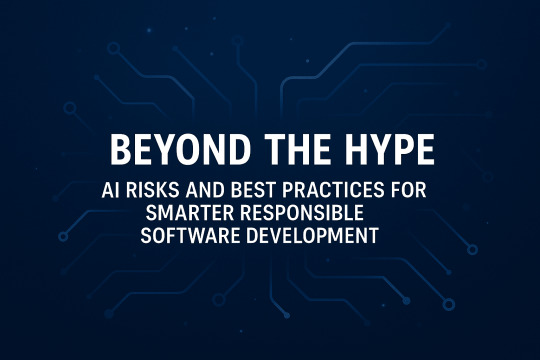
View On WordPress
#AI#AI challenges#Artificial Intelligence#Coding Phase#Continuous Operations#Detailed Design#DevOps#SDLC#Software Analysis#Software Architecture#Software Construction#Software Deployment#Software Design#Software Development#Software Development Life Cycle#Software Development Process#Software Engineering#Software Maintenance#Software Retirement#Software Testing
0 notes
Text
youtube









youtube

youtube
#127.0.0.1#65xyz#255.255.255.254#10.0.1.255#~#Class:B#TCP/iP#MultiCast.arp#BroadCa*t :🆖:#SDLC#TLC#:🚾#TOR.Browe-*#O.Route-66 .pr'oto#BPD#ØttØ✔#➰#🔱#➿#♻#🔯#-⭕#.L🅾🅾p(FûnCtℹœŇ-äl[INT-3r🅿r8]∆.⏳--);#💰#🔭#🏧#🔬.💡>>[📗]#📘.🔦#📙.📡#🕯
1 note
·
View note
Text
Benefits of Secure Development Lifecycle | IIFIS
Better code quality, early problem discovery, peace of mind, and regulatory compliance are all provided by a safe development lifecycle. These advantages assist teams in lowering risks, maintaining high standards throughout the development process, and creating dependable and secure software. https://iifis.org/blog/what-is-sdlc
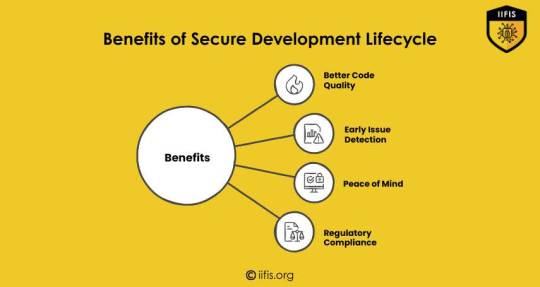
0 notes
Text
Transferable Skills in Software Testing
Transferable Skills in Software Testing The skills you acquire in software testing can be transferable to other roles within the tech industry. For example, testing often involves understanding the logic of code, working with tools, and learning different software development methodologies. These skills are highly valued in other IT positions such as DevOps, Project Management, or even Business Analysis.
Software testing builds skills that are valuable across the tech industry:
Analytical Thinking – Helps in Business Analysis and Cybersecurity.
Basic Coding & Tools – Useful in DevOps, Automation, and Development.
SDLC & Agile Knowledge – Applies to Project Management and Scrum roles.
Tool Proficiency – Experience with JIRA, Git, Selenium, etc., is valuable in many IT roles.
Communication Skills – Supports roles like Technical Writing and Product Management.
Problem Solving – Essential for System Admin, Support, and UX Design. 📞 Phone Number: +91 9511803947 📧 Email Address: [email protected]

#SoftwareTesting#TransferableSkills#CareerInTech#QAEngineer#TechCareers#DevOps#ProjectManagement#BusinessAnalysis#AgileTesting#TestAutomation#SDLC#CareerGrowth
0 notes
Text
Harnessing AI Tools to Streamline the Software Development Lifecycle
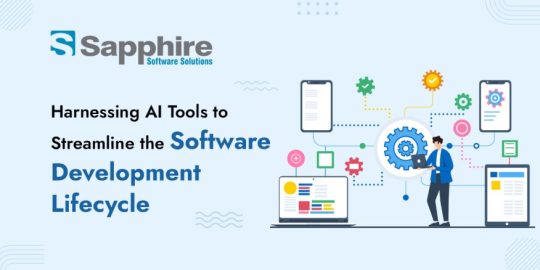
Discover how AI is transforming the Software Development Lifecycle (SDLC) from planning to deployment! 🤖 This insightful blog explores the top AI tools that are enhancing efficiency, reducing errors, and accelerating delivery timelines. Embrace the power of automation and intelligent insights to stay ahead in the development game! 💡💻
Read More:
0 notes
Text
Why the Five Stages of The System Development Life Cycle Matter More Than Ever?

Source: Image by superohmo
Ever wondered how those apps on your phone or the software at work actually get built? There’s a clear process involved, kind of like following steps in a recipe. It’s called the five stages of the system development life cycle. Understanding these steps helps everyone involved, from the people writing the code to those who just want to know how software comes together. It makes the whole thing less mysterious and shows how teams work to create the technology we use daily. So, let’s take a look at how it’s done.
What Is Software Development Life Cycle (SDLC)?
Image by monstArrr_ from Getty Images
The Software Development Life Cycle, or SDLC for short, is the journey a software product goes through from the moment someone thinks, “Hey, we need a system for that,” to the day users actually start using it—and beyond. It’s not just a technical process; it’s a roadmap for how software is imagined, designed, built, tested, launched, and maintained.
Rather than diving straight into coding, the SDLC makes sure teams start with a clear plan. It answers big questions early: What’s the goal? Who’s it for? What does it need to do? From there, the cycle flows through analysis, design, development, and testing, ending with maintenance, which is where the software continues to evolve.
And yes, while there are many ways to approach software development, almost all of them are built around the five stages of the system development life cycle.
Origin of SDLC
The roots of the SDLC go back several decades to a time when software systems were just beginning to get complicated enough to need formal planning. Early programmers realized that just jumping into code didn’t work so well once projects got big. Bugs piled up, features were missed, and teams got frustrated. What followed was a more structured approach to software development.
By the 1970s, models like the Waterfall method introduced clearly defined phases—each one completed before the next began. Over the years, newer approaches like Agile and DevOps emerged, emphasizing flexibility, collaboration, and speed. But regardless of the method, the foundation remained the same: the five stages of the system development life cycle provided the structure teams needed to move forward with confidence.
5 Stages of SDLC
Understanding the five stages of the system development life cycle is crucial for successful software development. Each stage plays a vital role in ensuring the final product is functional, reliable, and meets user expectations.

1. Planning
The planning phase sets the foundation for the entire project. It involves identifying the project’s objectives, scope, resources, and potential risks. Effective planning ensures that the project aligns with business goals and provides a clear roadmap for the development team.
2. Analysis
During the analysis phase, developers gather detailed requirements from stakeholders. This involves understanding user needs, system functionalities, and any constraints. The goal is to create a comprehensive requirement specification that guides the subsequent stages.
3. Design
The design phase translates the requirements into a blueprint for building the software. This includes architectural design, user interface design, and database design. A well-thought-out design ensures that the system will be scalable, efficient, and user-friendly.
4. Implementation (or Development)
In this phase, developers write the actual code based on the design specifications. It’s where the software starts to take shape, with functionalities being developed and integrated. Regular code reviews and testing during this phase help in identifying and fixing issues early.
5. Testing & Maintenance
Once development is complete, the software undergoes rigorous testing to identify and rectify any bugs or issues. After successful testing, the software is deployed to the production environment. Maintenance involves ongoing support, updates, and enhancements to ensure the software continues to meet user needs.
Benefits of SDLC
Implementing the SDLC framework offers numerous advantages:

Structured Approach: Provides a clear roadmap, reducing confusion and ensuring all team members are aligned.
Risk Management: Early identification of potential issues allows for proactive mitigation strategies.
Quality Assurance: Regular testing and reviews at each stage ensure a high-quality end product.
Cost Efficiency: By identifying issues early, organizations can avoid costly fixes later in the development process.
Stakeholder Satisfaction: Continuous involvement of stakeholders ensures the final product meets their expectations.
Advantages and Disadvantages of SDLC
Pros
Cons
Provides a clear structure for development
Can be too rigid for fast-changing requirements
Easy to track progress and manage resources
Documentation can be time-consuming
Identifies problems early in the process
May slow down small or agile teams
Encourages thorough testing and maintenance
Less flexible if changes are needed mid-process
Improves communication between stakeholders
Not ideal for projects with unclear goals
6 Basic SDLC Methodologies
Over the years, different approaches to SDLC have emerged. While each one follows the same basic stages, the way those stages are carried out can vary a lot. Each methodology, regardless of its flexibility or structure, still follows the guiding logic of the five stages of the system development life cycle, just in a slightly different way. Here are six widely used SDLC methodologies:
Waterfall is the classic approach. It follows a straight line from planning to deployment. Each stage is completed before the next begins. It works best when requirements are fixed and clear.
Agile breaks the process into smaller cycles called sprints. Teams work in short bursts, delivering small parts of the project and adjusting quickly to feedback. It’s great for projects that need flexibility and frequent updates.
Iterative focuses on building a simple version of the software first, then improving it in cycles. This approach helps to test ideas quickly and refine them based on user input.
Spiral combines design and prototyping in stages. It’s especially useful for large, high-risk projects that need frequent evaluations and adjustments.
V-Model pairs each development stage with a corresponding testing phase. This method is strict but ensures that every part of the software is checked and verified.
Big Bang skips the formal stages and dives straight into development. It’s risky and usually reserved for experimental or small projects with minimal requirements.
Also Read: Life Cycle Impact Assessment: A Comprehensive Guide to Understanding Environmental Impacts
Conclusion
It’s tempting to jump straight into development. But without a clear path, projects drift, timelines slip, and the end product often disappoints. That’s where the five stages of the system development life cycle prove their worth. They turn chaos into clarity, aligning your team with your goals and giving you a real shot at building something meaningful. Whether you’re a developer writing code, a manager tracking timelines, or a client investing in a vision, understanding SDLC isn’t just helpful. It’s necessary.
0 notes
Text

Check now the limitations of the agile method and how to overcome them
Link:- Solve the puzzle
0 notes
Text

Ready to build a strong foundation in software testing? Join Eagle Eye Edutech Private Limited for a comprehensive Software Testing Industrial Training Program and gain expertise in: SDLC & STLC • Jira Tool Mastery • Mobile & Web App Testing • Functional & Non-Functional Testing • Hands-On Live Project Development
Fee: ₹20,995/- + GST (Non-Refundable) Duration : 2-3 Months Location: Noida, Uttar Pradesh Contact us at: 0120 450 7380 | WhatsApp : +91 9811188574
Boost your career with expert guidance & corporate-level knowledge! Enroll today and become an industry-ready software tester!
#ITTraining#SoftwareTester#Jira#SDLC#STLC#TechTraining#CareerGrowth#QualityAssurance#ITCareer#QAEngineer#FunctionalTesting#MobileTesting#WebTesting#NoidaJobs#LiveProject#ExpertTraining#TechSkills#SoftwareDevelopment
0 notes
Text
What Is the Software Development Life Cycle? SDLC Explained
In the rapidly developing world of software development, the provision of high-quality solutions requires a well-structured approach. Software Development Life Cycle (SDLC) provides a systematic process for efficient design, development, testing and maintenance of software.
In Coderower we specialize in the implementation of proven SDLC procedures to create robust, scalable and secure software solutions adapted to businesses around the world.
What is the Life Cycle of Software Development (SDLC)?
Software development life cycle (SDLC) is a structured frame that outlines the steps involved in the development of software and ensures that it meets business objectives, technical standards and needs of users. SDLC provides:
A roadmap step by step for software development.
Quality Ensuring through systematic testing and verification.
Cost and time efficiency by minimizing risk and optimizing workflows.
SDLC consists of different phases, from planning to deployment, ensuring reliable, secure and aligning software with business requirements.
Phases of Life Cycle of Software Development
SDLC specifies the task(s) to be performed at various stages by a software developer. It ensures that the end product is able to meet the customer’s expectations and fits within the overall budget. Hence, it’s vital for a software developer to have prior knowledge of this software development process. SDLC is a collection of these six stages, and the stages of SDLC are as follows:
1. Planning & Requirement Analysis
Define the scope of the project, goals and feasibility.
Identify technical requirements and potential risks.
Compare with business goals for optimal solutions.
2. System Design
Architect software structure and select the best technology magazine.
Design of wire images, UI/UX prototypes and system workflows.
3. Development (Coding and Implementation)
Convert the design to functional software using modern programming languages.
Take advantage of agile, devops and CI/CD methodology for efficiency.
4. Testing and Ensuring Quality
Perform units testing, integration, system and user acceptance.
Identify and correct errors to ensure the reliability of the software.
5. Deployment and Integration
Loosen the software in a living environment with minimal downtime.
Ensure smooth integration with existing systems and databases.
6. Maintenance and Support
Provide ongoing updates, security patches and performance improvements.
Offer 24/7 support for continuous business operations.
Software Development Models for Software Development
Different SDLC models offer unique approaches based on the complexity of the project, team structure and business needs. Some popular SDLC models include:
Model of the waterfall
A linear, step-by-step, where each phase is completed before switching to the next.
Best for a well-defined, small and medium projects with clear requirements.
2. Agile Model
Uses iterative approach with continuous feedback and adaptation.
Ideal for dynamic and evolving projects requiring flexibility.
3. V-model (verification and verification)
Testing is integrated at every stage of development.
In is high-quality software with minimal defects after development.
4. Spiral Model
Combines iterative and development based on risk.
Best for large, complex projects requiring continuous improvement.
5. Devops Model
Focuses on continuous development, testing and deployment through automation.
Allows faster delivery with improved cooperation between teams.
With CodeRower, we use Agile, Devops and tailored, which are adapted to SDLC models to give the best solutions for businesses across industries.
What is the need for SDLC?
SDLC implementation ensures:
Higher software quality through structured development.
Risk management Problems identification in time.
Optimized cost and time efficiency with well -defined processes.
Scalability for growing business needs.
Security approach-first with built-in protection measures.
With more than 10+ years of experience, 250+ projects of delivered projects and 85% of recurring clients , CodeRower is governed by SDLC in the field for unmatched software solutions.
How does SDLC Solve Security?
SDLC enhances security by integrating secure coding practices, threat modeling, and vulnerability assessments at every stage. It includes encryption, authentication, and regular security testing to prevent cyber threats, ensuring data integrity, compliance, and robust protection against evolving security risks. Threat modeling in the design phase to identify vulnerability.
Secure coding procedures To prevent data violation and exploitation.
penetration testing for assessing safety deficiencies.
Regular updates and safety patches for protection against cyber threats.
At CodeRower, SDLC ensures security by integrating secure coding practices, threat modeling, penetration testing, and encryption at every stage. Our DevSecOps approach proactively identifies vulnerabilities, ensures compliance, and protects data with continuous monitoring and automated security updates for robust defense.
Example of Real Life implementation SDLC
Growing Start SaaS approached CodeRower for application development Cloud applications with automation controlled and Multiplayer support .
Using Agile SDLC We:
Designed scalable architecture with MicroServices & Cloud Computing.
Developed MVP (minimum viable product) within 3 months.
Integrated Analytics & AIA Automation in real time.
Provided deployment on one click with pipes CI/CD.
Result? A Fully functional, scalable platform SaaS, which reduced operating costs by 40% and improved users’ connection 70%.
How to choose SDLC?
Choosing the right SDLC model depends on:
Project Size-Small projects can benefit from waterfall model while applications require agile or devops.
complexity- If requirements are fixed, and v-model works well. If they develop, agile or spiral models are ideal.
Time and Budget-Devops and Agile reduce the time market and offer cost-effective solutions.
Security Needs- Devsecops ensures high security for FINTECH, Healthcare and Enterprise software.
CodeRower specializes in adapting SDLC models based on unique business requirements for maximum efficiency and success.
Conclusion: Why is SDLC important?
For providing high-quality, secure and scalable software solutions are essential for providing high quality, secure and scalable software solutions. It ensures efficient development, cost optimization, risks alleviation and long-term maintenance. By integrating Security, Automation and Agile Methodology SDLC helps businesses to achieve faster time on the market, increased user experience and robust protection against cyber threats.
At CodeRower we use the best SDLC industrial practices to build innovative software, ready for the future adapted to business needs. Whether you need your own software development, cloud integration, automation or managed IT services, our expertise ensures trouble-free digital transformation and business success.
Ready for the development of secure and scalable software?
FAQs
1. What are the key stages of the Software Development Life Cycle?
Key phases of life cycle of software development (SDLC) include planning, requirements analysis, design, development, testing, deployment and maintenance . Each phase ensures structured development, quality ensuring, and continuous improvement for providing safe, scalable and high -performance software solutions.
2. What are the most commonly used SDLC models?
The most commonly used SDLC models include waterfall, agile, scrum, spiral, model V and Devops. Each model offers unique advantages, from structured sequential development (waterfall) to flexibility and continuous iteration (agile, devops), and ensures effective delivery of software -based software.
3. What is the SDLC explained in detail?
Life cycle of software development (SDLC) is a structured process for efficient software development. Includes planning, requirements analysis, design, development, testing, deployment and maintenance, provides high quality, secure and scalable software when optimizing costs, risk mitigating and improving project success.
4. What are the emerging trends in SDLC for 2025?
The appearing Trends SDLC for 2025 includes AI-controlled development, low code/no code platforms, devsecops integration, cloud-nantive solutions, blockchain for security and continuous testing automation. These innovations increase efficiency, security and scalability, ensure faster delivery, reduced costs and improved software quality in a modern development environment.
5. How does SDLC work?
SDLC (life cycle of software development) works by monitoring a structured process for developing high quality software. Includes planning, requirements analysis, design, development, testing, deployment and maintenance. Each phase ensures efficiency, security and scalability, minimizes risks and optimizing performance for successful software delivery.
#software development#web app development#web development#app development#ios app development#custom app development#android app development#game development#blockchain development#custom software development#SDLC
0 notes